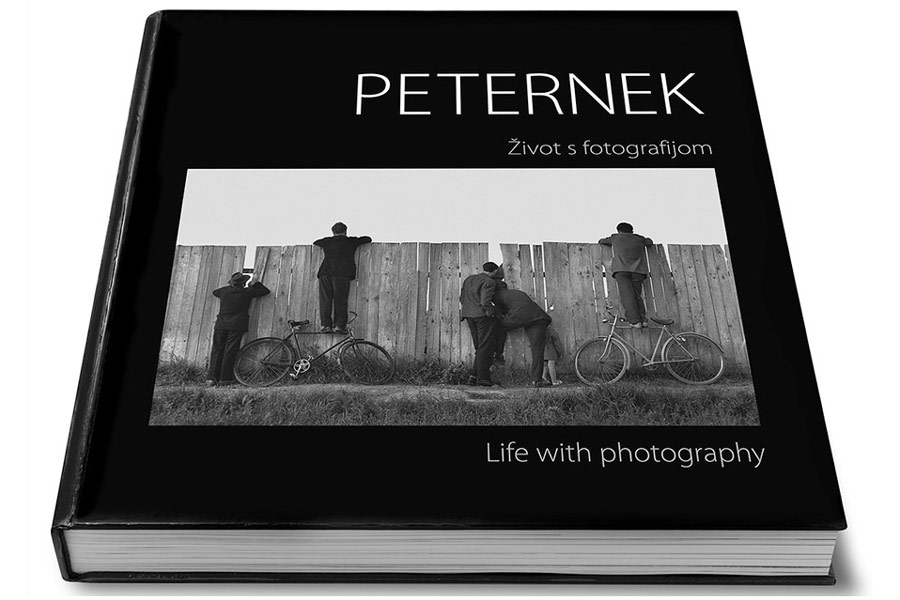Famous Serbian Photographers: Tomislav Peternek
How to introduce Tomislav Peternek, one of the best photographers nowadays? What is it that determines his world and his primordial need to offer his photographical achievements of the highest quality? In 1967, he became Master of Photography at the Yugoslav Photo-Association; in 1973, he received one of the highest world titles – FIAP Excellence – from the International Federation for Art Photography (Federation Internationale de l’Art Photographique) (FIAP). He stopped counting his awards, exhibitions, front pages… many years ago.
You started your journey in Vinkovci…
Yes, I was born in Vinkovci, in the then Kingdom of Yugoslavia. It that spirit, my father gave my older brother and me the names Aleksandar and Tomislav. It was my mother who noticed my love for photography; so, she bought me a small board, ramica, in which a negative and paper were placed and exposed to the sun for a picture to appear. I’d be hiding under the bed for a long time so that the picture could last longer. Later, I found out that I also needed a fixer and a developer to achieve the permanence of a photograph… That’s how everything began. I’ve been in journalistic photography since 1954. I started at Svetlost Kragujevac, and after coming to Belgrade, I published my photos in Borba, Sport i svet, Mladost, Jugoslovenska revija, Ekonomska politika, NIN…, and I also worked for Reuters, East Light, Contrast, UNICEF, Sigma… Now I’ve got a status of a freelance artist. And I still work and always have my camera with me. Because… I haven’t taken my best photograph yet (laughs).
You are famous for the fact that your photographs show a true image of an event and a person…
While on his deathbed, my father advised me not to engage in politics; no matter what I do, I’ve never forgotten his words. I’ve met and photographed many politicians, and searched for their character when taking photos of them. In my opinion, Ceaușescu was a “political fox”, and I found that expression and rendered it immortal in the portrait. I’ve also photographed the events that have marked our reality in the last few decades. When the bombing of Serbia began in 1999, I “relocated myself” onto Belgrade’s roofs. That was my way to fight. The photos of “Belgrade’s 45 Hell Nights” will remain – for history!
A photograph is more deadly than any other weapons. That message, contained in a fraction of a second, can influence changes, break down taboos…
A photograph is said to be worth a thousand words; but it would be more precise to say that it needs not a single word at all to link with everybody and convey its photographer’s thought. You had a chance to convince yourself of that during your Paris exhibition, didn’t you?
I had a big exhibition in our Cultural Center in Paris, and many told me ‘it’s a pity you didn’t live here – your photos would’ve had a great value’. And I answered – ‘but then they wouldn’t be what they really are!’ Namely, a photograph should live, people should recognize something of their own in it… When you’re watching my photograph taken in Kragujevac in which the watchers are peeping over the fence in order to watch a sports match, or the photograph of a man in the bridge trousers and a contrabass with a picture of Marilyn Monroe on it, taken on a New-Year’s morning at the Belgrade Railway Station, you place it within a certain milieu… I couldn’t, nor would I know how to paint it in Paris!
Your photos have unmistakably had an influence on the generations of photographers that have come, and simultaneously on our society as well…
In 1985, the Institute for Journalism gave me an opportunity to be a mentor and draft a program for the education of journalistic photographers. I trained over 300 young people. Many of them work in renowned newspapers and one of my students is a teacher at Brooks Institute in Santa Barbara today. I was invited to give a lecture there, they offered me to stay there, too… But I’ve always wanted to record the life here and to cherish what my country has to offer.
What is it that motivates you to still work?
Man is what fundamentally motivates my work. I find my inspiration in life stories, in everyday life scenes. I’m horrified when I see someone taking photos motorom, making a hundred shots… What I feel while taking photos is what I only find to be true. I choose what I’ll take a photo of, I choose the moment and I only make one shot. That’s more difficult, but that’s what true authorship is all about.
Underwater photography is your great love, although you have engaged in applied, commercial, fashion photography… You also had an exhibition dedicated to nude women?
I was a photo editor in the first three numbers of the Serbian “Playboy” magazine, and I quitted since I had no motivation to take photos of paid models. It was quite a different thing when I took photos of Magda, who is also my wife, on Montenegrin beaches and olive groves. Having previously been taking photographs for her book of poems “Knock on My Heart”, I realized how much beauty and energy Magda Peternek offered to the lens. She’s the one to have ‘revealed’ erotic photography to me and given me a new inspiration. I presented the photographs at my 50th self-financed exhibition entitled An Ode to Life.















Social Network